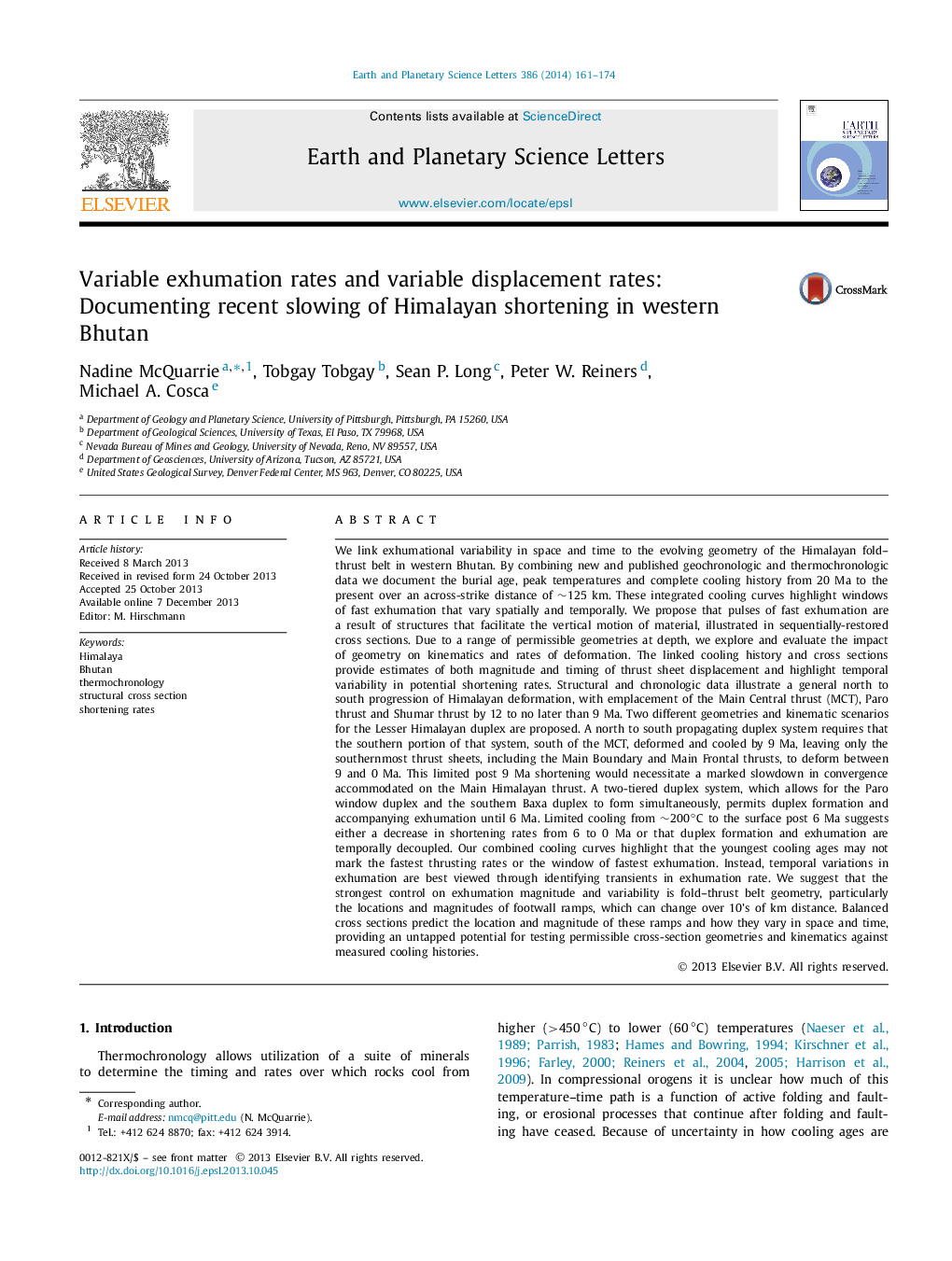| کد مقاله | کد نشریه | سال انتشار | مقاله انگلیسی | نسخه تمام متن |
|---|---|---|---|---|
| 6429838 | 1634770 | 2014 | 14 صفحه PDF | دانلود رایگان |

- We present new zircon (U-Th)/He, and 40Ar/39Ar cooling ages for Himalayas in western Bhutan.
- We combine new and published cooling into integrated cooling curves from 700â°C to 20â°C
- Cooling curves are linked to a balanced cross section to emphasize the role of footwall ramps on pulses of rapid cooling.
- Linking cross section estimates of shortening with cooling ages provides rates of shortening though the eastern Himalaya.
- These rates have been variable over the 20 Myr history of deformation.
We link exhumational variability in space and time to the evolving geometry of the Himalayan fold-thrust belt in western Bhutan. By combining new and published geochronologic and thermochronologic data we document the burial age, peak temperatures and complete cooling history from 20 Ma to the present over an across-strike distance of â¼125 km. These integrated cooling curves highlight windows of fast exhumation that vary spatially and temporally. We propose that pulses of fast exhumation are a result of structures that facilitate the vertical motion of material, illustrated in sequentially-restored cross sections. Due to a range of permissible geometries at depth, we explore and evaluate the impact of geometry on kinematics and rates of deformation. The linked cooling history and cross sections provide estimates of both magnitude and timing of thrust sheet displacement and highlight temporal variability in potential shortening rates. Structural and chronologic data illustrate a general north to south progression of Himalayan deformation, with emplacement of the Main Central thrust (MCT), Paro thrust and Shumar thrust by 12 to no later than 9 Ma. Two different geometries and kinematic scenarios for the Lesser Himalayan duplex are proposed. A north to south propagating duplex system requires that the southern portion of that system, south of the MCT, deformed and cooled by 9 Ma, leaving only the southernmost thrust sheets, including the Main Boundary and Main Frontal thrusts, to deform between 9 and 0 Ma. This limited post 9 Ma shortening would necessitate a marked slowdown in convergence accommodated on the Main Himalayan thrust. A two-tiered duplex system, which allows for the Paro window duplex and the southern Baxa duplex to form simultaneously, permits duplex formation and accompanying exhumation until 6 Ma. Limited cooling from â¼200â°C to the surface post 6 Ma suggests either a decrease in shortening rates from 6 to 0 Ma or that duplex formation and exhumation are temporally decoupled. Our combined cooling curves highlight that the youngest cooling ages may not mark the fastest thrusting rates or the window of fastest exhumation. Instead, temporal variations in exhumation are best viewed through identifying transients in exhumation rate. We suggest that the strongest control on exhumation magnitude and variability is fold-thrust belt geometry, particularly the locations and magnitudes of footwall ramps, which can change over 10ʼs of km distance. Balanced cross sections predict the location and magnitude of these ramps and how they vary in space and time, providing an untapped potential for testing permissible cross-section geometries and kinematics against measured cooling histories.
Journal: Earth and Planetary Science Letters - Volume 386, 15 January 2014, Pages 161-174